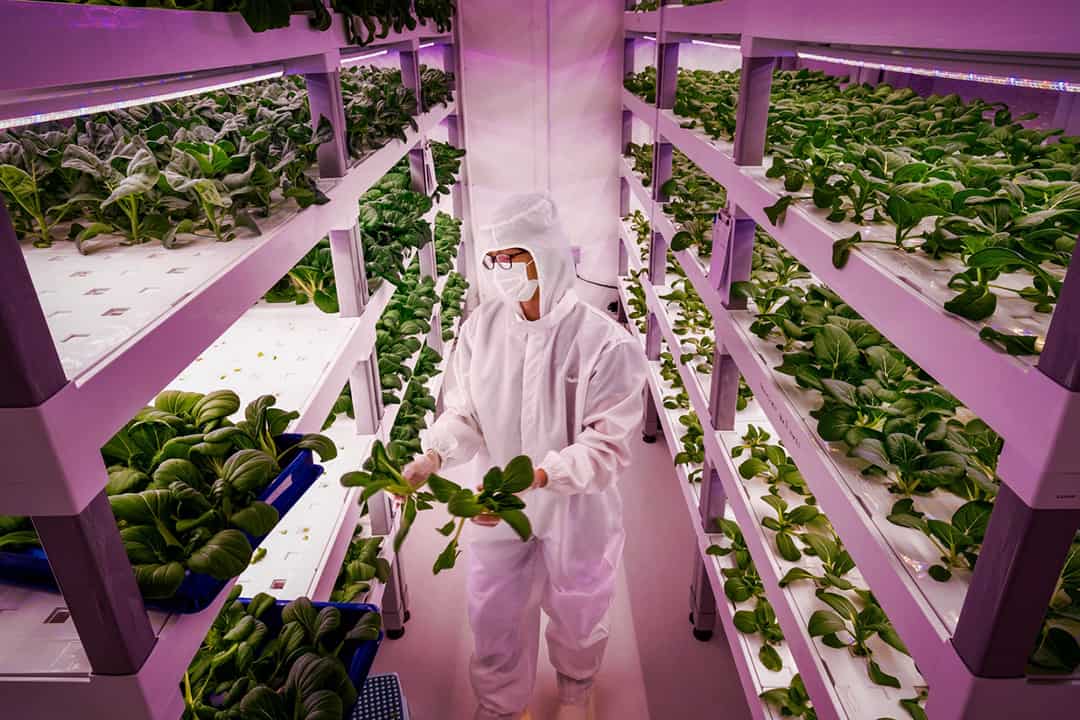Our current era has witnessed the rise of global problems such as overpopulation, resource scarcity, and pollution. Two problems of particular importance are the rapid degradation of farm land and increasing stresses on food production systems.
With the world’s population crossing eight billion individuals as of November 2022, farming and livestock industries are under stress to meet humanity’s Herculean dietary needs. Currently, modern agriculture is extremely water-intensive, utilizing almost 70 per cent of the planet’s freshwater supply and contributing to about 21 to 37 per cent of total global emissions.
With rapidly shrinking ecosystems and dire shortages of arable land, alternative farming needs to move beyond looking into genetic solutions — such as creating high-yielding variety seeds — or promoting mechanical implements to boost output. Farming needs to be space-effective, benefit its local community, and reduce agricultural produce delivery, thereby reducing carbon emissions.
Vertical farming and its benefits
Imagine an indoor, temperature-controlled environment where crops are grown in enclosed stacks, each row on top of the other. The crops’ growth would be contingent on specified inputs of water, carbon dioxide, and nutrients — as well as emerging technologies such as artificial sunlight, vertical irrigation lines, and customized nutritional schedules.
While many methods of indoor crop production already exist, such as greenhouses and hydroponic gardens — crops cultivated without soil by only using water enriched with nutrients — vertical farming stands apart, as it is fundamentally based on the optimization of space. An installation that supports vertical farming could theoretically eliminate the need for acres of arable land and soil while simultaneously eliminating transportation costs and reducing greenhouse emissions.
If vertical farming is sustainably integrated into urban planning, cities would no longer rely on transporting crops from rural areas, self-sufficiently meeting the food production needs of their residents.
Moreover, vertical farms in cities might help mitigate other municipal issues by reusing wastewater to irrigate crops. Using sewage in powering such installations could further energy efficiency as well.
Since the inauguration of the world’s first vertical farming installation in Singapore in 2012, the concept of including vertical farms in urban planning mechanisms to provide for the cities of the future has seemed plausible. A systemic push toward vertical farming would not only help humanity meet its sustainable development goals but also provide new job opportunities and revitalize research on alternative farming.
The limitations of vertical farming and robotic bees
The vertical farming model is not without its own set of limitations and challenges. Even if vertical farming can help cut down on emissions, it’s important to consider how water-intensive it can be. While vertical farming can use up to 98 per cent less water than outdoor agriculture, it still requires a continuous water supply that could exacerbate stresses on urban water supply networks.
Moreover, while modern vertical farming units have successfully grown crops such as lettuce and tomatoes that don’t require much water, other crops with different irrigation needs are not as easy to grow.
The complexity of growing different varieties of crops requiring different nutritional inputs, water dosages, and times to gestate and grow means that any vertical farming facility would not only require a highly trained team of support staff to monitor crop production but also need to be powered 24/7 and have access to a steady supply of freshwater. Therefore, the operational costs of vertical farming remain quite high.
Perhaps the biggest and most complex obstacle by far is the tenability of indoor pollination mechanisms. The issue with using good old regular honey bees in vertical farming is that they are not as effective in such an enclosed space as they would be outdoors. Artificial light from LED lights might hamper their sense of direction, and natural pollination is always a painstakingly time-consuming process.
So, what is the suitable alternative? Robotic bees, of course. While they’re currently far from being a perfect technology, scientists worldwide are actively working to see how artificial bees can help pollinate under the right conditions by using artificial intelligence, spatial sensing, and mapping.
Though typically small in size, the scope and potential for these robotic minions are enormous. One current prototype is the RoboBee, a small, insect-sized robotic bee developed by researchers at the Wyss Institute of Harvard University, which uses tiny artificial muscles that can contract and relax. According to the Wyss Institute, the goal of the RoboBee project is to “develop autonomous micro-aerial vehicles capable of self-contained, self-directed flight and of achieving coordinated behavior in large groups” — behavior much akin to that of a normal bee but more efficient.
The advantage of using such hard-working mechanical workers is that they would facilitate a more efficient pollination process and help tackle a number of issues, such as limiting pathogens, enhancing productivity, and theoretically helping in crop production for future space missions. Because robotic bees have longer lifespans than natural bees, their net productivity will be higher than that of regular bees, enabling them to work for longer periods.
The future for alternative farming is truly exciting and has vast potential to meet humanity’s current and future demands. Perhaps it wouldn’t be unreasonable to assume that in a few short decades, the vegetables in your burrito bowl from the local Chipotle could be sourced from an indoor farm down the block the size of a skyscraper, aided by tens of thousands of tiny, drone-like robotic bees. Sounds like something straight out of Black Mirror, doesn’t it?



No comments to display.